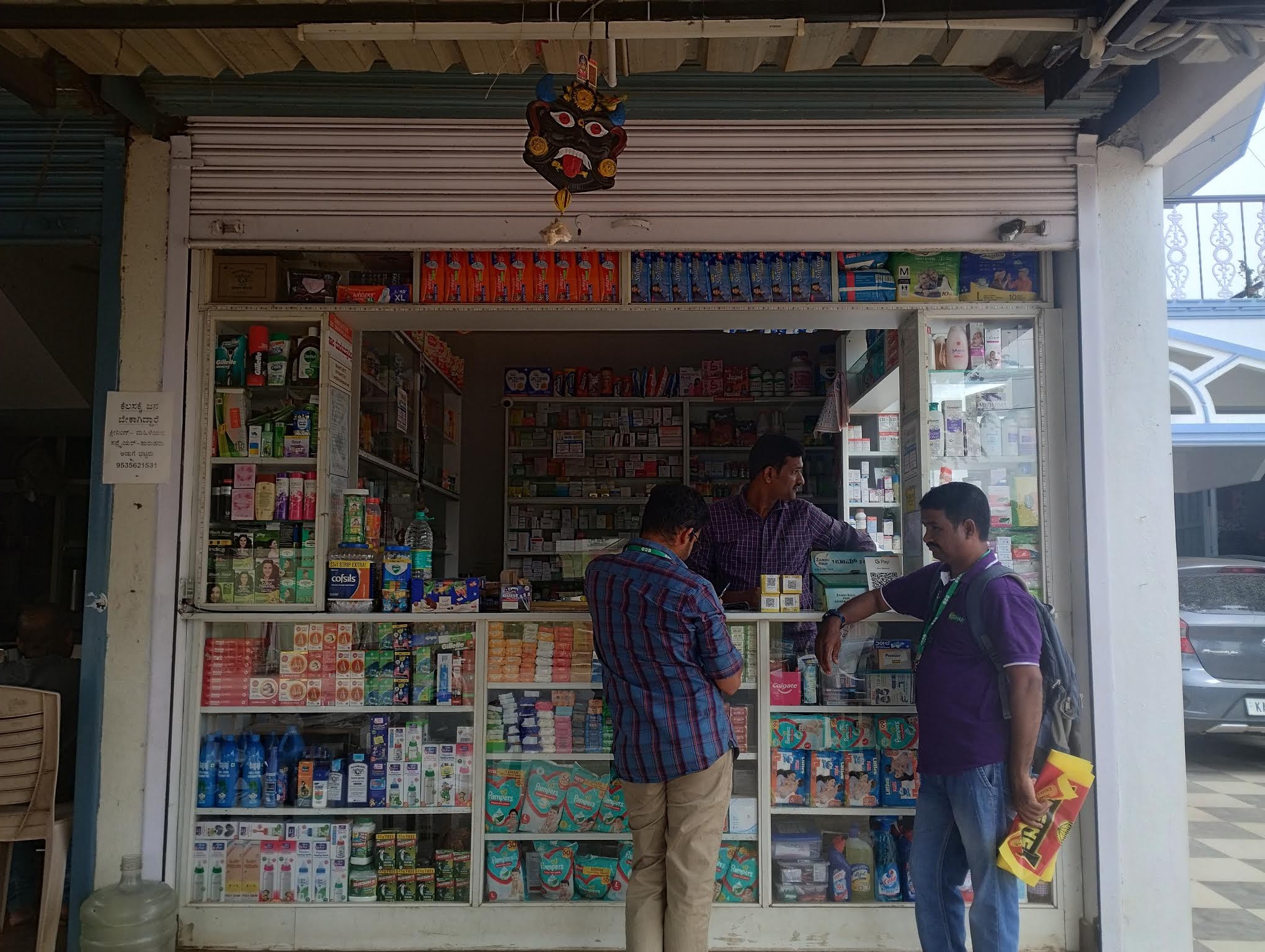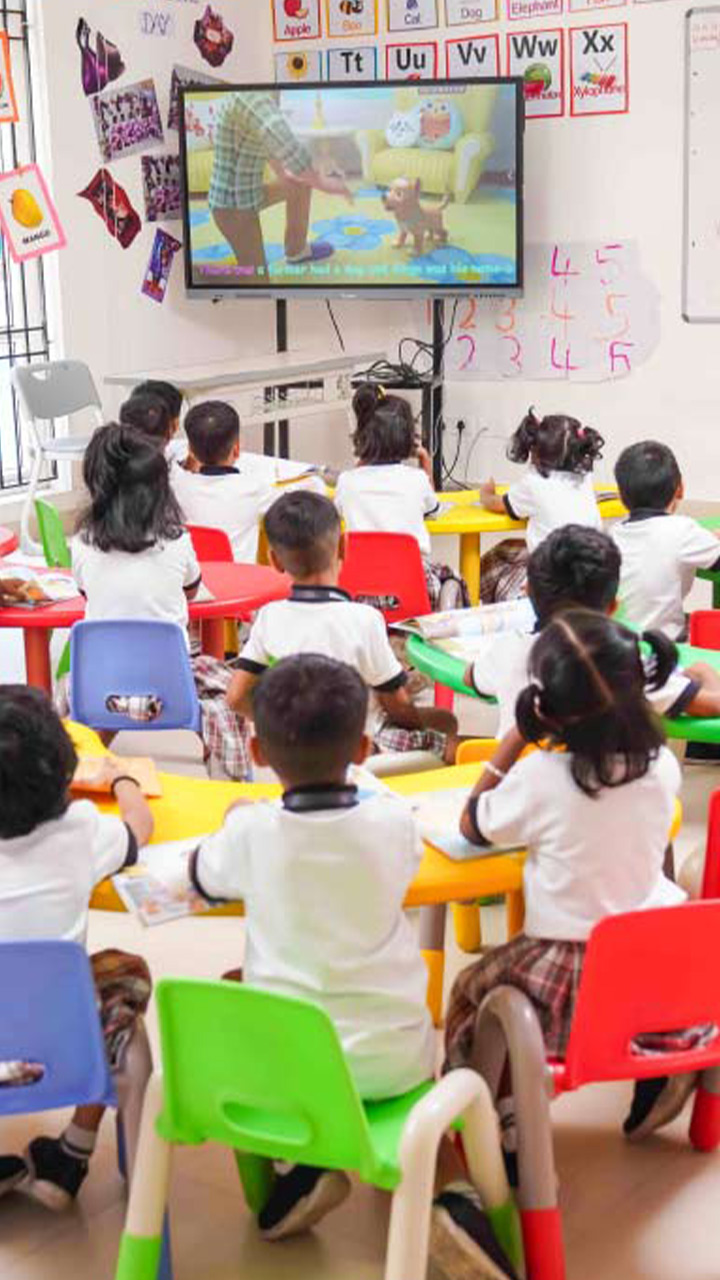What can Extended Reality (XR) do for Rural India?
By Snigdha

The extended reality space, comprising new-age tech such as augmented reality (AR), virtual reality (VR), and artificial intelligence (AI), is witnessing exciting advancements as well as new business opportunities. In this article, we take a look at how XR is emerging in India, and how it can address the needs and opportunities in rural India.
According to the Indian Brand Equity Foundation, by 2027, the AR/VR market in India is set to experience a CAGR of 38%. XR technology is dynamic in that it can be adopted across industries – in travel to create immersive marketing experiences for new destinations and make the booking process more seamless and transparent; by the fashion industry to create virtual storefronts and fitting rooms; by healthcare professionals for improved training and diagnostic processes. Additionally, the surging adoption of 5G technology and ever increasing smartphone usage – expected to reach 96% by 2040 – in the country is also thought to aid in the proliferation of XR in India.
Why is AR/VR relevant to the needs of rural India?
Limited access to resources and awareness is often chalked out as the key deterrent of programs and improved services in various rural areas in India. In turn, the inefficacy problem is multifaceted and lies at the intersection of various socio-economic, cultural, infrastructural, and financial hurdles. Hence, solutions to the same should take these ground realities into consideration in order to bridge the gap in the quality of products and services in rural areas.
But how does extended reality as a technology fit into this story? To understand this, we need to keep in mind the current challenges plaguing the sectors XR is trying to break into:
1. Education
In India, the state of education is dire and in need of interventions. Schools are struggling with insufficient infrastructure, substandard teaching quality, and a lack of vocational and life skills training, which leaves many students ill-equipped for the workforce or higher education. According to the National Achievement Survey (NAS) conducted by the Ministry of Education, only 45 per cent of fifth-grade students could read at a second-grade level.
Yet, the government has also reinstated its interest in leveraging AR VR tech for the education system as part of the National Education Policy. For example, the Indian Institute of Technology Madras (IIT-M) is working on an AR VR based learning experience for schools in rural areas. By making the best of digital technologies, the aim is thus to equalize the playing field of learning. XR tech can increase access to opportunities that help children learn social science, history, sciences and languages like never before. These tools can empower students and teachers to bridge the digital divide and make them competent for higher education in new ways.
The rapid success of these interventions can be attributed to the user -friendly nature of the applications as well as ease of access owing to the rise in smartphone usage. This is noted as one of the USPs of this technology – that it can be adopted and made use of with a smartphone and proper internet connection. For schools underserved and under-resourced, this is a path to providing their students with quality learning experiences and enriching their curriculum while not adding too much strain on their resources.
While XR cannot directly address the socio-cultural and economic factors that are known to contribute to dropout rates and pedagogical challenges in rural classrooms, it is a step in the right direction towards providing immersive and high-quality education. For instance, Nischal’s Smart Learning Solutions offers holistic solutions through its math labs, delivering training modules and cost-effective alternatives to traditional labs. By allowing users to visualize concepts and processes right in the classroom, XR enriches learning experiences, reduces costs, and empowers educators with enhanced teaching tools.
2. Education
According to the Periodic Labour Force Survey (PLFS) by the NSSO, around 45.76% of India’s workforce is employed in agriculture and allied sectors in 2022. As a leading producer of wheat, rice, and cotton, the need for innovation to improve efficiency in the industry is immense. Issues such as post-harvest losses, crop disease management, and proper fertilizer dissemination cost India over $13 billion annually.
One solution lies in granular data collection through XR technology. AR, for example, allows farmers to monitor entire farms through a dashboard, detecting pests or infestations without manual inspection. Recent AR apps collect satellite data for real-time land monitoring, integrating AI and deep learning to identify problem areas. Additionally, AR helps new farmers learn complex tools and collaborate with agricultural experts remotely, leading to better farming practices and improved yields.
Timely information has proven critical in managing disease prevalence and droughts, helping farmers avoid both crop and economic loss. Information and communication tech is proving to be increasingly vital in providing farmers with the information they need from sowing to harvesting. With machine learning and computer vision, farmers can target weeds and pests with precision, reducing herbicide use and minimizing environmental impact, all while boosting crop yields.

3. Healthcare
Access to healthcare in rural India remains a significant challenge, with time and distance being major barriers. According to Rajiv Pathni of Praar Consulting, rural populations face multiple obstacles—geographic, financial, and social—that prevent timely medical care. The scarcity of doctors, with one for every 1,457 people, and the lack of healthcare infrastructure further complicate matters.
Early diagnosis is crucial for better health outcomes, yet in rural areas, it is often delayed due to long travel times and limited access to diagnostic services. The result is a higher burden of preventable diseases and poorer health outcomes. Emerging technologies like AR, VR, and AI offer promising solutions to these challenges. VR is being used for medical training, rehabilitation, and mental health therapy, providing remote support where traditional services are limited. AR aids in remote diagnostics and post-treatment care, allowing healthcare providers to guide patients from a distance. AI can help with early disease detection through remote diagnostic tools and telemedicine, bridging the gap in areas with a shortage of healthcare professionals.
Anticipating the Challenges
In education, integrating AR/VR technology faces several hurdles:
1. Curriculum Alignment: Schools might struggle to align AR/VR tools with established curricula and learning goals, making adoption difficult.
2. Traditional Pedagogy: Many educators might be comfortable with conventional teaching methods, leading to resistance against new technologies.
3. Cost and Accessibility: Limited budgets and poor internet access, particularly in rural schools, can hinder widespread implementation.
Healthcare presents unique challenges for AR/VR adoption:
1. Doctor-Patient Dynamic: The power gap between healthcare providers and patients, along with the need for doctor-patient confidentiality, complicates the use of these technologies.
2. Sensitivity of Care: Implementing AR/VR solutions in healthcare requires careful handling of patient experiences, for example, with mental health or post-trauma care.
In the agricultural sector, AR/VR technology must overcome:
1. Loyalty to Traditional Methods: Farmers might often stick to familiar, long-established techniques, making them apprehensive about adopting new technologies given the high risks and potential for failure.
2. Vast Scale of Implementation: Rolling out AR/VR solutions across India’s vast and diverse agricultural landscape poses a significant challenge.
In all sectors, the use of AR/VR raises significant privacy concerns. The vast amount of data collected—whether from students, patients, or farmers—requires stringent measures to protect sensitive information, prevent misuse, and comply with regulatory frameworks. Ensuring robust data security is essential for the successful adoption of these technologies in any sector. Further, conducive policy changes are the need of the hour in order to safeguard privacies and regulate the burgeoning XR industry, as highlighted in a new study by the ISB Institute of Data Science (IIDS) and the Indian School of Business – Centre for Business Markets (ISB-CBM) on AI and healthcare in India.
Essmart’s Role in The AR/VR Ecosystem
A problem Essmart began to address more than a decade ago rings true and relevant in India; a lack of adequate research and distribution to meet the needs of the last-mile user far from the glitz of urban solutions. Given that XR is being applied in sectors where its applications are sensitive and long-lasting, it is imperative to gain a deep contextual understanding of the use case and the target demographic. Leveraging our decade-long experience with farming communities on the ground, our Insights team directly connects your team to the insights that matter the most.
References
- India Virtual Reality Market Share & Research Report [2030]. https://www.fortunebusinessinsights.com/india-virtual-reality-market-107618. Accessed 28 Oct. 2024.
- Guntukogula Pattabhi, Sandeep. AR, VR AND AI FOR AGRICULTURE: A MODERN WAY TO ADDRESS TRADITIONAL PROBLEMS. 2022. UNIVERSITY OF AGRICULTURAL SCIENCES.
- IIT Madras Researchers Developing Virtual Reality-Based Education Model for Rural Schools. http://pib.gov.in/PressReleseDetail.aspx?PRID=1915889. Accessed 28 Oct. 2024.
- “Revolutionizing Healthcare in India with AR, VR and XR.” Redington Group, https://redingtongroup.com/mea/blog/revolutionizing-healthcare-in-india-with-ar-vr-and-xr/. Accessed 28 Oct. 2024.
- Patil, Ashok Vikhe, et al. “Current Health Scenario in Rural India.” The Australian Journal of Rural Health, vol. 10, no. 2, Apr. 2002, pp. 129–35. PubMed, https://doi.org/10.1046/j.1440-1584.2002.00458.x.
- www.ETHealthworld.com. “Policy Gaps Hindering Widespread Adoption of AI in Indian Healthcare Ecosystem: ISB Study – ET HealthWorld.” ETHealthworld.Com, https://health.economictimes.indiatimes.com/news/health-it/policy-gaps-hindering-widespread-adoption-of-ai-in-indian-healthcare-ecosystem-isb-study/113331558. Accessed 28 Oct. 2024.
- There Is 1 Doctor for Every 1,457 Indian Citizens, Reveals Government. 4 July 2019, https://www.timesnownews.com/mirror-now/in-focus/article/there-is-1-doctor-for-every-1457-indian-citizens-reveals-government/448668.
- Tejaswi, Mini. “‘India’s AVGC-XR Sector to Become $26-Bn Industry by 2030.’” The Hindu, 10 Feb. 2024. www.thehindu.com, https://www.thehindu.com/business/indias-avgc-xr-sector-to-become-26-bn-industry-by-2030/article67832231.ece.
